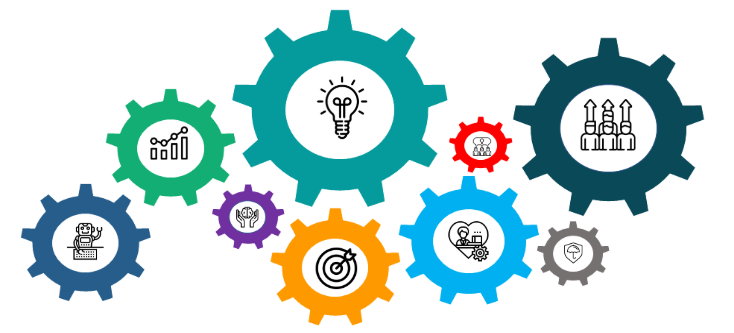Sign Up for Our
Updates
Task Mining Overview
Task mining is where a task is monitored as a human operator completes it, to extract first-hand information about the full end-to-end process. This monitoring is carried out by software, such as myInvenio. The software is placed on the client machine and captures inputs, such as mouse movement, clicks and keyboard presses. While the software records the process, it also captures the status of the screen and file outputs.
To capture the details of a process before automation, as much of the end-to-end process as possible must be visible. A technical business analyst is generally responsible for linking the business process requirements to the automation platform's capabilities. They collaborate with the current process owner (the person who performs the task) to carry out the process capture.
Favourite Feature
"Hidden Expertise" Tapped
A process owner who performs a task day in - day out, is often so well practised at performing it that they may complete many of the sub-tasks without thinking, almost by muscle memory. A business analyst may miss these rapidly-performed, repetitive sub-tasks when interviewing the process owner because they are not fully versed in the software and tasks involved. The analyst usually picks up any gaps when they reach the formal process mapping phase. At this point, the analyst will have to return to the process owner to fill in this missing detail. The lost time and money for the implementation team and lost productivity for the process owner accumulates over the span of the project.
Using task mining to capture every detail of the process brings a potentially lengthy, iterative undertaking down to an efficient, single-pass operation.
Biggest Potential Pitfall
Privacy and Security Concerns
Task mining invariably involves active screen capture of the process, as the process owner performs it. In doing so, it can expose the entire desktop of the operator to the business analysis team. The organisation must consider this concern and any potential exposure of passwords or private data (health, financial information, addresses, etc.). Depending on the region in which the task mining is carried out, some surveillance law may come into play (e.g., GDPR compliance in the EU).
How to Avoid Problems
The best way to avoid revealing potentially compromising business data and private customer and or/patient data, is, if at all possible, carry out monitoring of employee interaction on a task in a mock or test environment. If this is not possible, the service provider can quickly and efficiently generate a test database with simulated data.
In terms of surveillance law, the easiest way to ensure that you achieve compliance is to assume active employee consent is required. The GDPR guidelines provide a framework for this, ensuring compliance in the EU and providing a robust guide for employers with privacy concerns in less strict jurisdictions.
Where Task Mining can Benefit Healthcare
Highlighting Inefficient Workflows
Clinical and back-office workflows in healthcare can be challenging and time-consuming to navigate. In this scenario, menu navigation may be a viable option. Suppose a health worker needed to navigate multiple systems, menus and interfaces to fill in and distribute patient details when registering a new patient. This workflow would be considered a high throughput, high stress, low-efficiency workflow prime for collaborative automation improvement.
Poor Approval Processes
Task mining could highlight delays in an approval process, indicating that the organisation should consider a process review or semi-automated approvals. For example, when tracking medication compliance and inventory on a ward, approval from a senior member of the nursing staff is usually required.
Suppose a hospital was experiencing a long delay between health staff distributing medications and a modification to an individual's compliance record. In that case, this could indicate difficulty finding a suitable team member to approve a change. This kind of workflow could benefit from rapid-text based approval, authentication, and sign off.
Conclusion
While some peer-reviewed research is available on process mining in healthcare, task mining is still sparsely used. There appears to be low awareness of task mining in the market compared to tools such as RPA and uneasiness using the process with highly sensitive health data. However, using the best practises outlined above, a care facility can benefit from the reduced time to value and increased fit-for-purpose of an automation project, without compromising patient and staff privacy




